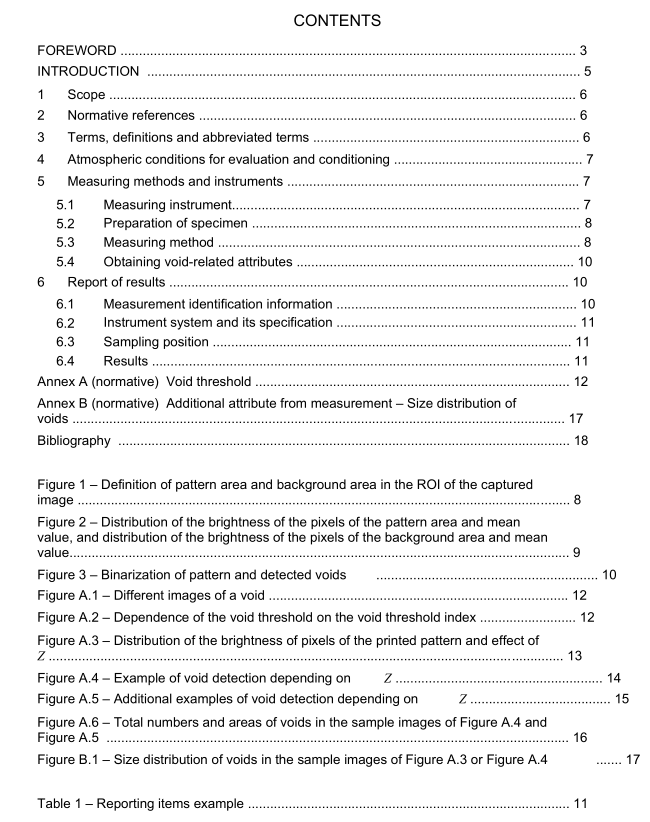IEC 62899-402-3 pdf – Printed electronics – Part 402-3: Printability – Measurement of qualities – Voids in printed pattern using a two-dimensional optical image

IEC 62899-402-3 pdf – Printed electronics – Part 402-3: Printability – Measurement of qualities – Voids in printed pattern using a two-dimensional optical image
4 Atmospheric conditions for evaluation and conditioning The standard atmosphere for evaluation (test and measurement) and storage of the specimen shall be a temperature of (23 ± 2) °C and relative humidity of (50 ± 10) %, conforming to standard atmosphere class 2 specified in ISO 291. For a plastic test piece which is a substrate with printed patterns, the standard atmosphere for evaluation (test and measurement) and storage of the specimen shall be a temperature of (23 ± 1) °C and relative humidity of (50 ± 5) %, conforming to standard atmosphere class 1 specified in ISO 291. Unless otherwise specified, the conditions shall be reported. If conditioning is necessary, the same standard atmosphere specified above shall apply.
5 Measuring methods and instruments Measuring instrument 5.1 The measurement of voids in the pattern shall be carried out with an instrument that can obtain the image of the pattern. The repeatability and accuracy of the measuring instrument should be less than 10 % of the tolerance specification of the smallest dimension of the voids that the measurer wants to measure. In the measurement system, the image of the pattern should be converted to an image file. The image should include the pixel information without loss due to compression (e.g. causes of jpeg compression). The pixel dimension or resolution of the image is determined by agreement between the user and supplier; if not, the pixel dimension of the image should be less than half of the smallest dimension of the void that the measurer wants to measure. If working with the resolution instead of the pixel dimension, this requirement should be fulfilled accordingly.
5.2 Preparation of specimen The measuring area of the specimen is determined by agreement between the user and supplier. The specimen should be kept flat during the measurement. The specimen to measure voids in the pattern necessarily contains the background area which does not have the pattern.
5.3 Measuring method The printed pattern has the form of a line or solid area and can have voids. For the measurement of voids in the pattern, the boundary between the printed area and the void is recognized and the number and area of the void are calculated using an appropriate software. The size information on every measurable void of interest is required. The measurement steps are as follows:
a) Find a region of interest (ROI) The ROI shall be set to include a whole pattern or a part of the pattern to be measured depending on the size of the pattern. The ROI shall contain both the pattern with voids (measuring area) and the background without the pattern as shown in Figure 1.
b) Define the pattern area The pattern area shall include only the printed pattern excluding the background area without the pattern as shown in Figure 1.
c) Define the background area The background area in the ROI shall include only the background area excluding the printed pattern as shown in Figure 1. The brightness of the background area is used to define the void threshold (refer to Annex A).
d) Measure the mean brightness of the pattern area and the mean brightness of the background area Using a suitable software that can provide the value of the brightness of a pixel, measure the brightness of all the pixels of the image of the pattern area and calculate their mean value, B pattern . The value of the brightness ranges from 0 (darkest) to 255 (brightest). The description is given based on an 8-bit pixel depth. If the pixel depth is different, the numerical value for the brightest value can vary. Also measure the brightness of all the pixels of the image of the background area and calculate their mean value, B back . Figure 2 shows examples of the distribution of the brightness of the pixels of the pattern area and the distribution of the brightness of the pixels of the background area.









